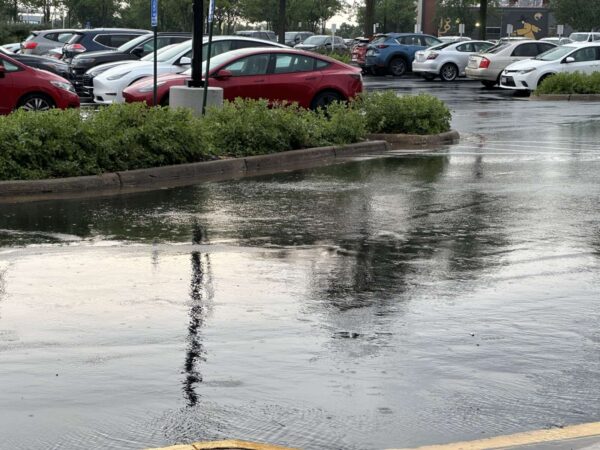
A Flood Watch is now in effect for the D.C. area, including Fairfax County.
The National Weather Service describes the chances of “slow-moving showers and thunderstorms” this afternoon into the early evening as “likely.”
Issued at 11:26 a.m., the alert will be in place until 8 p.m.
“A few inches of rain is possible in a short amount of time as a result, and may cause rapid rises of water on creeks, streams, urban and poor drainage areas, and in other flood-prone locations,” the NWS says.
Rain has become more plentiful in recent days after the D.C. region experienced drought conditions earlier this year. A storm on Wednesday (July 5) brought at least 1-4 inches of rain, according to the NWS, contributing to flooding and power outages, particularly in the central part of Fairfax County.
The full alert is below:
…FLOOD WATCH IN EFFECT UNTIL 8 PM EDT THIS EVENING…
* WHAT…Flash flooding caused by excessive rainfall is possible.
* WHERE…Portions of DC, Maryland, and northern Virginia, including the following areas: in DC, District of Columbia. In Maryland, Anne Arundel, Carroll, Central and Southeast Howard, Central and
Southeast Montgomery, Charles, Frederick MD, Northern Baltimore, Northwest Harford, Northwest Howard, Northwest Montgomery, Prince Georges, Southeast Harford, and Southern Baltimore. In northern Virginia, Arlington/Falls Church/Alexandria, Central and Southeast Prince William/Manassas/Manassas Park, Eastern Loudoun, Fairfax, Northwest Prince William, Stafford and Western Loudoun.* WHEN…Until 8 PM EDT this evening.
* IMPACTS…Excessive runoff may result in flooding of rivers, creeks, streams, and other low-lying and flood-prone locations.
* ADDITIONAL DETAILS…
– A couple rounds of slow-moving showers and thunderstorms are likely this afternoon into this evening. A few inches of rain is possible in a short amount of time as a result, and may cause rapid rises of water on creeks, streams, urban and poor drainage areas, and in other flood-prone locations.

